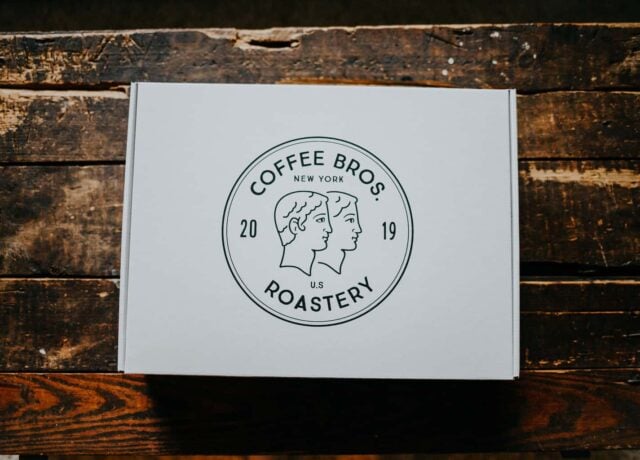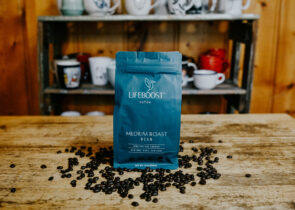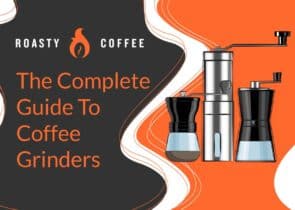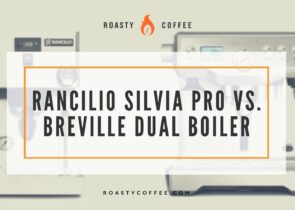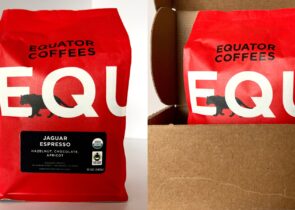Chances are you’ve heard of Bodum before thanks to their outstanding French presses. Seriously, they’re so popular even a lot of coffee shops (both chains and local) have taken to selling them. But recently the. company came out with the Bodum Coffee Grinder. So, do these models crack up to the same stellar performance of their press-cousins? That’s what we’re here to find out.
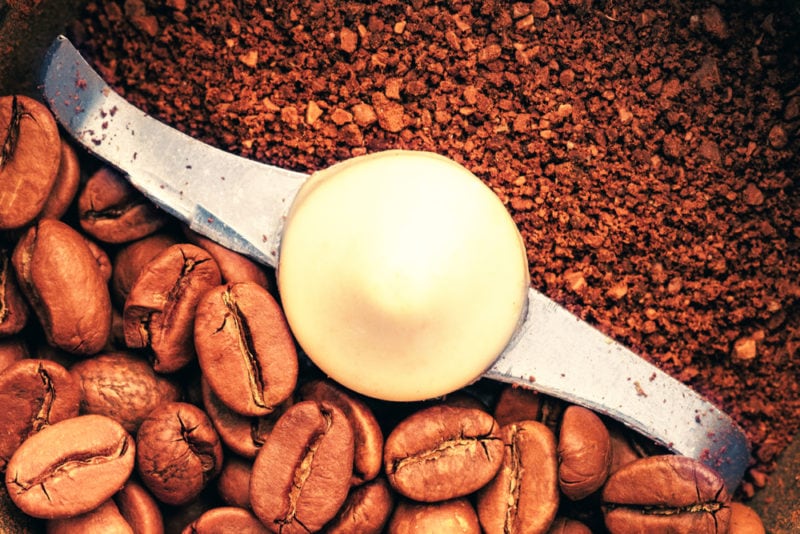
At A Glance: Our Top 3 Picks for Bodum Coffee Grinders
Bodum Overview
Perhaps best known for their iconic French press, Bodum Chambord is an internationally respected brand that produces high-quality, affordable coffee and tea products in addition to other kitchen wares. Originally founded in Copenhagen Denmark in 1944, the headquarters are now located in Switzerland.
Following his father, Peter Bodum, the founder’s son, Jorgen Bodum now directs the company. So it has remained true to it’s family owned roots.
Quick Summary: The Best Bodum Coffee Grinders
 | Our Top Pick Bistro Premium Burr Grinder |
| Check on Amazon → |
 | Bistro Standard Burr Grinder |
| Check on Amazon → |
 | Bistro Blade Grinder |
| Check on Amazon → |
The Common Grounds
Bodum’s grinder line-up runs from $24 models all the way to $120 ones, so it’s safe to say there’s some variety built in. However, there are a few things you can count on across the board.
Firstly, we have to talk about design. These machines are sleek and user friendly. You won’t be ashamed to leave them out on your counter and the sight of it won’t make you angry from having to fiddle for an hour to get a good grind.
Next, all of the grind mechanisms, whether blade or burr, are made using stainless steel, as opposed to using ceramic for the burr grinders. Also, they are all plug-in rather than battery powered.
Bodum Coffee Grinders
Bodum offers two main models for their coffee grinders, the burr grinder and the blade grinder. The burr grinder comes in both a regular and premium option. The rest of the variation in the line is purely aesthetic, so we’ll just be covering these models and you can pick whichever color you prefer. Just know that some colors come with bumped-up price tags.
Bistro Premium Burr Grinder
The first grinder here is also our favorite of the bunch. Made using stainless steel, plastic, borosilicate glass, rubber and silicone, this grinder is pretty well-constructed. The conical burr grinders are made with stainless steel and give you a consistently even grind.
There is a push button operated pre-set timer that allows users to grind a specific amount of beans. Also, the adjustable grind size can get you from espresso to French Press with 12 adjustable grind settings.
Furthermore, the borosilicate glass grounds container helps reduce static cling on the coffee grounds, which could negatively impact flavor. And the friction clutch helps prevent damage to the grind gear itself.
Lastly, the hopper holds up to 7.75 ounces of coffee beans. Also, it comes in black, white, red, chrome, die-cast copper, and shiny copper. Overall this is a really impressive entry-level machine for a relatively affordable price.
Bistro Standard Burr Grinder
For a little more than half of the price of the premium version, you can compromise a bit on build quality for a cheaper machine. It also has a stainless steel conical burr grinder and 12 grind settings.
Instead of borosilicate glass, this machine has a plastic coffee catching container. This shouldn’t seriously impact the longevity of the machine but it may impact the amount of static your beans are exposed to.
Additionally, this model ditches the built-in timer, friction clutch, color options, and grind guide, all of which are included in the premium option. However, if you won’t miss those and don’t mind a little more plastic, this machine is perfect if you’re on a budget but don’t want to downgrade to a blade grinder.
Bistro Blade Grinder
Last and, unfortunately least on our list is the electric blade grinder. While this isn’t our favorite of the Bodum Bistro line, it’s not too bad, especially considering the price.
It’s compact and functional, and even though the blade grinding mechanism isn’t perfect, it is passable. This machine. requires a bit more monitoring to get a good grind than the other two options, but you can actually get a decent one with practice and patience. And it’s still easier than manual grinder.
It doesn’t have preset grind settings, instead it is a pulse action grinder with a transparent top. So you simply pulse the grinder until the beans meet your visual standards. Theoretically this gives you more customizability, however the slightly uneven grind counterweights that pro for us.
Additionally, this grinder has a slimmer profile than the other two options with an equally attractive design. It offers more color options than the standard with black, white, red, chrome, matte chrome, and die-cast copper. However, some users complain that it is a bit messier to use.
Burr vs Blade
One of the first considerations you’ll need to address when buying a coffee grinder is whether you are going to opt for a burr grinding mechanism or a blade one. And looking at the Bodum lineup isn’t going to remove that decision for you.
First, let’s explain what the difference is. Burr grinders use two revolving abrasive surfaces. The beans are crushed between the grinding wheel and the other nonmoving surface. ultimately, this produces a more consistent, even grind.
On the other hand, blade grinders essentially work like blenders. The design works great for smoothies…but not so great on coffee beans. The propeller-like blades slice up the beans in a haphazard way, leaving you with an inconsistent grind. This lack of uniformity affects how the grounds extract and the eventual taste of the brew.
Thus, as a general rule, we recommend getting a burr grinder. They are more expensive than blade grinders, but the difference they make is both noticeable and worth it. If you can’t spring for an automatic one, try looking into manual ones instead before considering blade grinders.
That said, we were actually pretty impressed with how evenly the Bistro managed to grind beans. So if you really want to go with the Bodum brand but need the budget option, you can still count on the cheaper model to get the job done… just not quite as well.
Manual vs Electric
Now, when it comes to choosing between manual and electric, Bodum only offers one side of the debate. All 3 of their models are electric, so if you want to go with this brand, you’ll have to go with that option. However, it’s obviously not the only one, so here’s the difference.
People’s main complaint with (*cough* cheap) electric grinders is that they overheat and spoil the beans. This is not the case for most grinders as heat transfer is negligible unless there has been some seriously poor design-work involved. But, as a result of this idea, many electric grinders, including these, grind in short bursts to. minimize the heat generated as an extra precaution.
The main issue we have with electric grinders is that they can be noisy and tend to be much more expensive than manual grinders. While the first point doesn’t seem to be a problem with the Bodum line, the second one could be.
While $100 may be trivial to some, it could be a deal breaker for others, especially if they are also investing in other coffee gear at the same time. So if the price is an issue for you, we recommend going with a manual burr grinder and putting in a little extra work for your coffee.
(However, do keep in mind that $100 is actually at the low end of the quality-grinder price range, so if you can swing it, the premium machine is a good deal for an entry level machine.)
That brings us to the main pro of the electric grinder, which is convenience. At most, an electric grinder will require you to press a button every few seconds to pulse the beans. Others, you can just set and forget.
The Tea on Coffee Beans
One of the most common complaints we see with customer feedback on grinders, especially electric ones, is that they won’t grind “dark roast beans.” However there are a a few other factors usually at play than you might think. So if you are into dark roasts, don’t panic just yet.
Many of these disgruntled customers will vaguely mention that they were using a “dark roast.” However, when a roast level is actually specified, it’s usually French roasts causing issue. That is because they are EXTREMELY oily and, honestly, tend to be pretty low quality. Choosing low quality, oily beans is probably the most sure fire way to ruin a good grinder.
Additionally, many users opt for store bought coffee with vague or non-existent roast date labels. Furthermore, a large portion of coffee sold at major grocery stores are labelled as dark roast, as this allows roasters to sell cheaper beans without people noticing, as the roast overpowers the inherent flavors. These tend to be oily and stale, again making for a clogged grinder.
High quality dark roasts are still going to have some oil on them, but you should only be able to see some spots here and there. This amount of oil shouldn’t clog your grinder, especially if you are regularly cleaning it.
So, what’s the solution? Buy quality beans. If you are going to invest in a grinder, do not skimp on your beans. Otherwise, you probably won’t notice any difference or you’ll break the machine within a few months (or both). If you are grinding at home make sure you are using FRESH beans from a brand you trust. Or you could even roast them at home!
Who Are These Machines For?
The Bodum Bistro grinder line is best suited for entry-level or casual home-baristas on a budget. We like the Standard and Premium burr grinders because they’ll give you a nice grind without running you out of several hundred dollars like other electric grinders.
They aren’t perfect, but they are durable, easy to use, and consistent, which ticks all of our boxes for someone looking to try their hand at home brewing without completely diving in. Plus, the convenience of the electric grinders is great for people who are a bit too busy to go with a cheaper but less efficient manual grinder.
Who are they NOT for?
Like we said, these grinders aren’t perfect for everyone (and that’s okay!). An experience home barista will likely find the grind range to be underwhelming, considering other models may have up to 40 preset options. While the 12 grind settings would work great for someone just getting their footing, it probably won’t for someone looking to do some serious experimentation or who regularly uses a variety of different brew methods.
Additionally, many, more exacting, coffee lovers prefer ceramic burr grinders because they don’t wear down with time the way steel options do. So if you want something to last more than a few years without replacement parts or upgrading, these machines aren’t for you.
Potential Alternatives
Something Similar
If you are looking for a similar machine to the Premium Bistro Burr grinder, take a look at the Capresso 560.01 Infinity Conical Burr Grinder. It’s still on the. lower end of prices for electric burr grinders, so it would also be a good choice for beginners.
For a slightly lower price, you can get a pretty similar machine from Capresso. The Infinity has 16 settings, steel burrs, and static reduction technology (though not as effective as the Bistro). In our opinion, it doesn’t look as sleek as with the zinc die-cast housing. But it is pretty heavy duty.
So if you want a few more grind options and don’t care too much about the appearance of your grinder (or perhaps even prefer the look of this one), the Infinity may be a good choice for you.
Additionally, if you are willing to spring for a slightly higher price point, the Bartaza is one of the most well-loved, tried-and-true entry level machines out there. So it is definitely worth looking at for more grind options (good for manual-brew fanatics) if you aren’t too concerned with price.
For Experts
If you think you and your wallet are ready for something a little more professional, definitely check out the Breville Smart Grinder Pro.
For starters, this machine has the sleek, durable stainless steel design that Breville is known for. It features an astounding 60 grind settings, 18 ounce bean hopper, and Precision Electric Timer. You can adjust the dosing with clearly labeled controls and have all the grinding information displayed on the LCD screen including grind time (adjustable in 0.2 second intervals), number of shots/cups, and coarseness. Additionally, you can grind directly into portafilter, grinds container, gold tone filter basket or paper filter–basically anything you want your grounds in.
If money is no object, you can get 230 grind settings and ceramic flat burrs with the Bartaza Vario Flat Burr Grinder. It’s the best of the best, though the customizability and convenience comes with a nearly $500 price tag.
Manual Option
If you’re interested in checking out a manual option, consider the JavaPresse Conical Burr Grinder.
This grinder checks all the boxes for us to be the ideal the manual grinder. It’s affordable, durable, portable, quiet and versatile. It actually has dual plated ceramic burrs and 18 different click settings, which will give you more options and a higher quality grind for a lower price than the Bodum Bistro Blade grinder. Plus, it’s about 90% quieter than most electric grinders.
Wrapping Up
Our favorite overall is definitely the Premium Burr Grinder. The upgrades do make the price worth it and it makes for an excellent entry level machine if you aren’t looking to break the break on something seriously top of the line.
If you are on a budget, we recommend going with the Standard burr grinder over the blade grinder. It’s only about $15 more and will give you a much more reliable grind with less effort. Plus, it’s quieter and less messy.
Happy Caffeinating!








